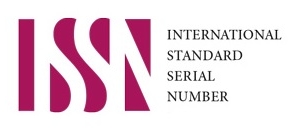Keywords cloud
Key words: method of launch time planning , safety of flight through space debris cluster Bibliography: 1. method of launch time planning , safety of flight through space debris cluster .
]]>7. Mechanics of a satellite cluster. Methods for estimating the probability of their maximal approach in flight
Organization:
Yangel Yuzhnoye State Design Office, Dnipro, Ukraine
Page: Kosm. teh. Raket. vooruž. 2020, (1); 76-84
DOI: https://doi.org/10.33136/stma2020.01.076
Language: Russian
Annotation: The mathematic modeling was performed of the flight of light-class three-stage launch vehicle injecting a payload into sun-synchronous orbit of 700 km altitude and a cluster of observed space debris objects in the conditions of dynamically changing cataloged space situation. It is shown that as the launch moment becomes closer, the cataloged space situation is ascertained, which leads to the constant change of the quantity of hazardous space debris objects observed in the vicinity of launch vehicle trajectory and to the change of the parameters of their approach to the launch vehicle: minimal relative distance, relative velocity, rendezvous angle and launch moment for which hazardous approach is revealed. The hazardous approaches for the launch vehicle trajectory under consideration are more often observed with the relative velocities of more than 8 km/s and rendezvous angles less than 90 deg and their variations within the launch window do not exceed 1.2 m/s and 0.035 deg respectively. In this case, the histograms of distribution of relative distance, relative velocity, and rendezvous angle from catalog to catalog vary insignificantly. The distribution of hazardous approaches in launch time within launch window is not uniform, the regions are observed with low quantity of hazardous approaches and with high quantity. The hazard of launch vehicle collision with observed space debris objects in a launch is confirmed. In all, in the launch day time window under consideration, more than ten hazardous approaches are revealed, for two of them the approach to minimal distance of less than 1 km is predicted. This testifies to the necessity of taking measures to increase safety of launch vehicle flight through observed space debris cluster. In order to increase Ukrainian launch vehicles miss ion safety in the conditions of near space pollution, it is proposed to create the system of pre -flight space analysis, whose tasks are periodic analysis of space situation not less than once in a day, revealing of hazardous approaches, determination of their parameters, and preparation of data to make decision on launch time.
Key words: method of launch time planning, safety of flight through space debris cluster
Bibliography:
1. ESA Operations. For the first time ever, ESA has performed a ‘collision avoidance manoeuvre’ to protect one of its satellites from colliding with a ‘mega constellation’. Electronic resource. – Access mode: https://twitter.com/esaoperations/status/ 1168533241873260544 (Access date 12.09.2019).
2. Klinkrad H. Space Debris – Models and Risk Analysis. Chichester, UK: Praxis Publishing Ltd, 2006. 430 p.
3. Johnson N. L. Orbital Debris: The Growing Threat to Space Operations / Advances in the Astronautical Sciences. 2010. Vol. 137. P. 3-11.
4. Orbital Debris. A Technical Assessment. Washington, D.C.: National Academy Press, 1995. 210 p.
5. Bandyopadhyay P., Sharma R.K., Adimurthy V. Space debris proximity analysis in powered and orbital phases during satellite launch / Advances in Space Research. 2004. Vol. 34. P. 1125-1129. https://doi.org/10.1016/j.asr.2003.10.043
6. Adimurthy V., Ganeshan A. S. Space debris mitigation measures in India / Acta Astronautica. 2005. Vol. 58. P. 168-174. https://doi.org/10.1016/j.actaastro.2005.09.002
7. Schultz E. D., Schultz E. D., Wilde P. D. Mitigation of Collision Hazard for the International Space Station from Globally Launched Objects / 6th IAASS Conference Safety is Not an Option. 21-23 May 2013. Montreal, Canada. Electronic resource. Access mode: https://iaassconference2013.-space-safety.org/ wp-content/uploads/sites/-19/2013/06/ 1420_Shultz.pdf (Access date 12.09.2019).
8. Brevdik G. D., Strub J. E. Determination of acceptable launch windows for satellite collision avoidance / AAS/AIAA Astrodyna-mics Conference. 19-21 August 1991 Pt1. Durango USA. Astrodynamics. P. 345-356.
9. Hejduk M. D., Plakalovic D., New-man L. K., Ollivierre J. C., Hametz M. E., Beaver B. A., Thompson R. C. Trajectory Error and Covariance Realism for Launch Cola Operations / Advances in the Astronautical Sciences. 2013. Vol. 148. P. 2371-2390.
10. Hejduk M. D., Plakalovic D., New-man L. K., Ollivierre J. C., Hametz M. E., Beaver B. A., Thompson R. C. Recommended Risk Assessment Techniques and Thresholds for Launch Cola Operations / Advances in the Astronautical Sciences. 2014. Vol. 150. P. 3061-3080.
11. Handschuh D. A., Wang C., Vidal B. Operational Feedback on Four Years of Collision Risk Avoidance at Launch in Europe / 7th IAASS Conference Space Safety is No Accident, 20-22 October 2014. Fredrichschafen, Germany. P. 355-363. https://doi.org/10.1007/978-3-319-15982-9_42
12. Ihdalov I. М., Kuchma L. D., Poliakov N. V., Sheptun Yu. D. Dinamicheskoe proektirovanie raket. Zadachi dinamiki raket i ikh kosmicheskikh stupenei: mohografiia / pod red. akad. S. N. Koniukhova. Dnepropetrovsk, 2010. 264 s.
13. NIMA TR 8350.2. Department of Defense world geodetic system 1984: Its definition and relationships with local geodetic systems. 3-d ed. National Geospatial-Intelligence Agency, 2000. 174 p.
14. NGA EGM2008 – WGS 84 version. Electronic resource. Access mode to page: http://earth-info.nga.mil/GandG/ wgs84/gravitymod/egm2008/ gm08_wgs84.html. (Access date 12.09.2019).
15. Holubek А. V. Sblizheniie rakety-nositelia s katalogizirovannymi kosmicheskimi ob’ektami v processe vyvedeniia na orbity s nizkim nakloneniem / Izvestiia vysshikh uchebnykh zavadenii. Mashinostroenie. 2018. №2 (695). S. 86-98.
Full text (PDF) || Content 2020 (1)
Downloads: 80
Abstract views:
1508
Dynamics of article downloads
Dynamics of abstract views
Downloads geography
| Country | City | Downloads |
|---|---|---|
| USA | Boardman; Mountain View; Matawan; Baltimore; North Bergen; Plano; Dublin; Phoenix; Phoenix; Phoenix; Phoenix; Phoenix; Phoenix; Phoenix; Phoenix; Phoenix; Phoenix; Phoenix; Phoenix; Phoenix; Phoenix; Phoenix; Phoenix; Monroe; El Monte; Ashburn; Seattle; Seattle; Ashburn; Ashburn; Ashburn; Seattle; Mountain View; Mountain View; Seattle; Tappahannock; Portland; Portland; San Mateo; San Mateo; San Mateo; San Mateo; San Mateo; Ashburn; Ashburn; Ashburn; Ashburn; Ashburn; Ashburn; Des Moines; Boardman; Boardman; Ashburn; Ashburn; Pompano Beach | 55 |
| Singapore | Singapore; Singapore; Singapore; Singapore; Singapore; Singapore; Singapore; Singapore | 8 |
| Germany | Falkenstein; Karlsruhe; Falkenstein | 3 |
| Canada | Toronto; Toronto; Monreale | 3 |
| Belgium | Brussels; Brussels | 2 |
| Unknown | Canberra; | 2 |
| France | Paris; Paris | 2 |
| Netherlands | Amsterdam; Amsterdam | 2 |
| Finland | Helsinki | 1 |
| Romania | Voluntari | 1 |
| Ukraine | Dnipro | 1 |


